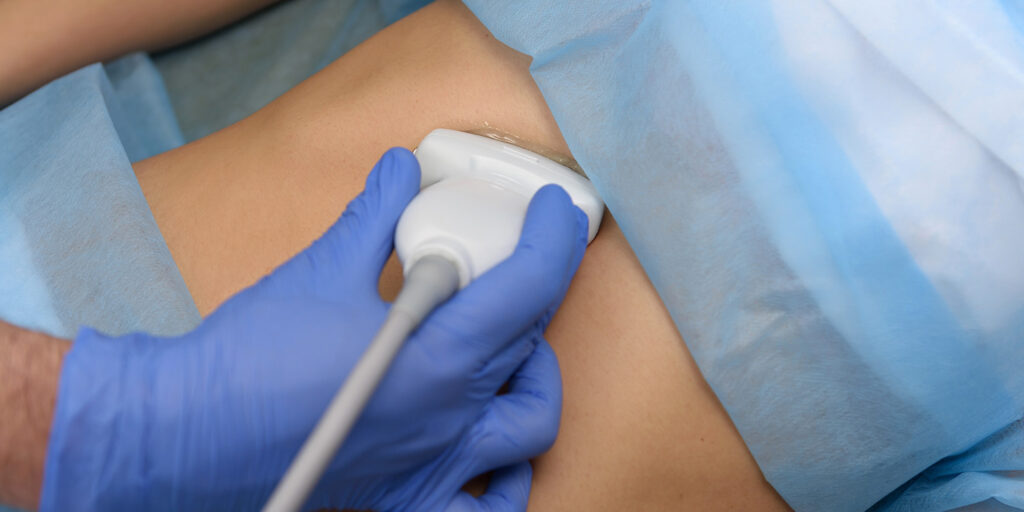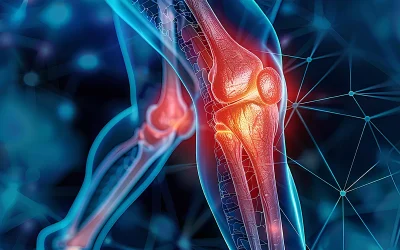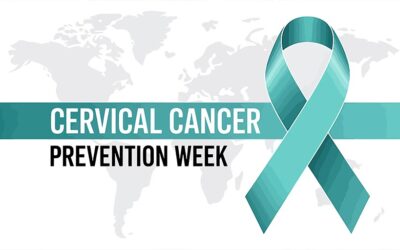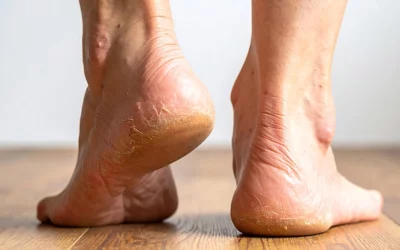FibroScan vs. Ultrasound: What’s the Difference?

Medical imaging tests play a key role in healthcare, helping doctors to detect, monitor, and manage various health conditions. Among them, FibroScan and Ultrasound are two commonly used tools, especially for assessing liver and abdominal health. While both are non-invasive and painless, their purpose and the type of information they provide are quite different. Many patients often wonder whether they need a FibroScan, an Ultrasound, or both? To clear the confusion, in this article, we’ll explain what each test involves, how they work, their benefits, and the situations where doctors may recommend one over the other.
Table of Contents
ToggleFibroScan
A FibroScan is a specialised test that measures the stiffness of the liver using transient elastography, a form of ultrasound-based technology. Instead of creating images, it sends painless vibrations through the liver to assess how stiff or elastic the tissue is. The stiffer the liver, the higher the chance of fibrosis or scarring.
Why is a FibroScan done?
Doctors recommend a FibroScan to check for liver damage without the need for an invasive liver biopsy. It is particularly useful for:
- Fatty liver disease (alcohol-related or non-alcoholic/Non-alcoholic steatohepatitis (NASH))
- Chronic viral hepatitis (Hepatitis B and C)
- Alcohol-related liver disease
- Cirrhosis
Benefits of early detection through FibroScan
- Non-invasive and safe, with no needles or sedation
- Quick and painless, taking only a few minutes
- Accurate and reliable in detecting liver fibrosis and fat content
- Helps monitor disease progression over time
- Reduces healthcare costs by avoiding unnecessary invasive tests
Who Should Consider a FibroScan?
A FibroScan is not a routine test for everyone. It is usually recommended for individuals who may be at higher risk of developing liver problems. Doctors often advise it for:
- People with chronic hepatitis B or C: To assess liver scarring caused by long-term infection.
- Those with a history of alcohol abuse: Since excessive alcohol intake is a leading cause of liver damage.
- Individuals with non-alcoholic fatty liver disease (NAFLD): Linked to unhealthy lifestyle habits and metabolic issues.
- Patients with diabetes or obesity: As these conditions increase the risk of fatty liver and fibrosis.
Preparing for a FibroScan & Factors Affecting Results
Preparation for a FibroScan is simple. Doctors usually advise empty stomach for at least 3 hours before the test, as a full stomach may affect the accuracy of the readings. No injections, sedation, or hospital admission are needed, and the test is quick, taking about 2-5 minutes.
Factors that can influence FibroScan results
While the test is reliable, certain conditions can affect its accuracy:
- Recent food or alcohol consumption: Can temporarily alter Fibroscan result.
- Inflammation or acute liver injury: May lead to higher readings that do not reflect long-term fibrosis.
- Obesity: Excessive fat in the abdominal area may make it harder to obtain clear measurements.
- Ascites (fluid in the abdomen): Interferes with the probe’s ability to measure stiffness.
- Metallic implants or pacemakers: In rare cases, these may disrupt the readings.
Ultrasound
An ultrasound is a widely used imaging test that employs high-frequency sound waves to create real-time images of organs, tissues, and blood flow inside the body. It is completely safe, non-invasive, and does not use radiation, which makes it suitable even during pregnancy.
Types of Ultrasound
Depending on the medical need, different kinds of ultrasounds are performed:
- Diagnostic ultrasound: Used to examine internal organs such as the liver, kidneys, gallbladder, or heart.
- Pregnancy ultrasound: To check foetal development, monitor growth, and detect complications.
- Ultrasound guidance for procedures: Helps doctors accurately guide needles or catheters during treatments or biopsies.
2D, 3D, and 4D Ultrasound
- 2D ultrasound provides flat, two-dimensional images and is the most common type.
- 3D ultrasound creates more detailed, three-dimensional images, often used in pregnancy scans.
- 4D ultrasound adds movement, showing real-time video of the foetus or organ activity.
What conditions can ultrasound detect?
Ultrasound can help diagnose a wide range of conditions, such as:
- Abnormal growths, including tumours or cancer
- Blood clots and vascular issues
- Gallstones and gallbladder inflammation (cholecystitis)
- Kidney problems
- Enlarged spleen
- Aortic aneurysm
- Ectopic pregnancy and other pregnancy complications
What to expect during an Ultrasound
The procedure is simple and painless. A clear gel is applied to the skin, and a handheld device called a transducer is moved over the area. The sound waves bounce off the tissues and create images on a monitor. Preparation may vary depending on the organ being scanned, for example, fasting before an abdominal ultrasound or having a full bladder before a pelvic ultrasound.
FibroScan vs Ultrasound: Key Differences
| Aspect | FibroScan | Ultrasound |
| Purpose | Specialised test to measure liver stiffness and fat content | General imaging test used to examine organs, tissues, and blood flow |
| Technology | Uses transient elastography (vibration + sound waves) | Uses high-frequency sound waves to create images |
| Target Area | Liver and spleen | Multiple organs: liver, kidney, heart, uterus, blood vessels, etc. |
| Duration | 2–5 minutes | 15–30 minutes (depending on area scanned) |
| Accuracy | Provides quantitative measurement of liver fibrosis and fat | Provides structural and anatomical details but not stiffness measurement |
| Suitability | Mainly for patients at risk of liver disease (fatty liver, hepatitis, alcohol-related, NASH) | Suitable for a wide range of conditions, including pregnancy monitoring |
| Cost | Generally higher than a routine ultrasound | More affordable and widely available |
In short, FibroScan is a specialised liver test, while ultrasound is a general imaging tool used across multiple medical conditions.
Do You Need Both FibroScan and Ultrasound?
Whether both tests are required depends on the health concern being evaluated. For liver-related conditions, an ultrasound may be the first step to identify fatty changes, structural abnormalities, or growths. However, it cannot measure liver stiffness or quantify fibrosis. That is where a FibroScan becomes valuable, as it provides more precise information about scarring and fat content.
In many cases, doctors use ultrasound and FibroScan together to get a complete picture of the liver’s health. Ultrasound shows the organ’s structure, while FibroScan assesses its function and degree of damage. Outside the liver, ultrasound continues to be the preferred tool for conditions involving the kidneys, gallbladder, pregnancy, and other organs.
When to Seek Medical Advice
Tests such as FibroScan and ultrasound are usually recommended by a doctor based on risk factors, symptoms, or existing medical conditions. Seeking timely advice is important in situations such as:
- Persistent abdominal pain, swelling, or unexplained discomfort
- Jaundice (yellowing of the skin and eyes)
- Unexplained weight loss, fatigue, or loss of appetite
- History of chronic hepatitis, heavy alcohol intake, or fatty liver disease
- Suspected pregnancy complications or abnormal bleeding
- Detection of lumps in the breast, abdomen, or other areas
- Severe or recurring digestive issues such as gallstones or kidney pain
Early consultation ensures the right test is chosen, allowing treatment to begin before complications develop.
Why Choose Graphic Era Hospital for FibroScan and Ultrasound?
Choosing the right hospital for diagnostic tests is as important as the test itself. At Graphic Era Hospital, patients benefit from:
Experienced Team for your liver diseases
Graphic Era Hospital has specialists in Hepatology, and interventional radiology who work together to provide accurate and reliable diagnostic services. Their experience helps in correctly interpreting FibroScan and ultrasound results, ensuring patients receive treatment plans that are appropriate for their condition. The focus is on clear reporting, timely diagnosis, and guiding patients towards the right medical care.
Advanced Imaging Technology
Graphic Era Hospital is equipped with modern imaging systems that deliver precise and reliable results for both FibroScan and ultrasound examinations. The use of updated technology not only improves diagnostic accuracy but also ensures faster reporting, helping doctors make timely decisions for patient care.
Patient-Centred Approach
At Graphic Era Hospital, the focus is on providing care that prioritises patient comfort and safety. Clear guidance is offered at every stage of the diagnostic process, ensuring that tests such as FibroScan and ultrasound are carried out smoothly and without unnecessary stress. This approach helps patients feel supported and confident while undergoing their evaluations.
Wrapping Up
Both FibroScan and ultrasound are valuable diagnostic tools, but they serve different purposes. While FibroScan provides specialised insights into liver stiffness and fat content, ultrasound remains a versatile imaging method for various organs and health conditions and can detect fatty liver only after liver fat content of more than 30%. Together, they help doctors form a clearer picture of a patient’s health and guide timely treatment.
For accurate testing and expert guidance, Graphic Era Hospital offers state-of-the-art facilities for both FibroScan and ultrasound in Dehradun. To book a consultation or schedule your test, call 1800-889-7351 today.
Frequently Asked Questions
Is FibroScan safe?
Yes, FibroScan is completely safe and non-invasive. It does not involve radiation, needles, or sedation.
How long does a FibroScan take?
The procedure usually takes about 10–15 minutes and provides instant results.
Can a FibroScan replace a liver biopsy?
In many cases, FibroScan reduces the need for a liver biopsy by accurately assessing fibrosis. However, in complex cases, a biopsy may still be required.
What is the normal range for liver stiffness in FibroScan results?
A healthy liver usually shows values below 5.5 kPa. Higher values may indicate varying degrees of fibrosis.
Can FibroScan detect fatty liver disease?
Yes, FibroScan measures both stiffness and fat content, making it useful in diagnosing and monitoring fatty liver disease.
What conditions can be detected by ultrasound?
Ultrasound can detect conditions such as gallstones, kidney disease, tumours, blood clots, pregnancy complications, and enlarged organs.
Where can I find FibroScan or ultrasound near me in Dehradun?
Both tests are available at Graphic Era Hospital, Dehradun, with advanced imaging technology and experienced specialists. Call 1800-889-7351 to book an appointment.
By Specialities
- Bariatric Surgery
- Cancer Care
- Cardiology
- Dental
- Dermatology
- Diabetes & Endocrinology
- Endocrinology and Diabetes
- ENT (Ear Nose Throat)
- Eye Care
- Gastroenterology
- Haematology
- Health Care
- Health Tips
- Hematology
- Hepatology
- Internal Medicine
- Mental Health and Behavioural Sciences
- Metabolic
- Neonatology
- Nephrology
- Neurology
- Nutrition & Dietetics
- Obstetrics & Gynaecology
- Oncology
- Ophthalmology
- Orthopaedics
- Paediatric
- Physiotherapy & Rehabilitation
- Plastic and Reconstructive Surgery
- Psychology
- Pulmonology
- Rheumatology
- Spine
- Urology
Recent Posts
Need expert medical advice?
Share your details and our healthcare specialists will reach out to assist you.
By proceeding, you acknowledge and agree to our Privacy Policy, Terms of Use, and Disclaimer.



















